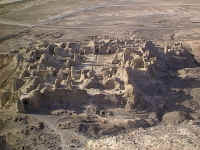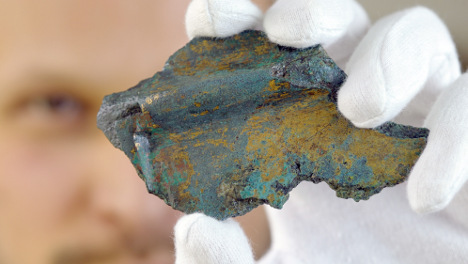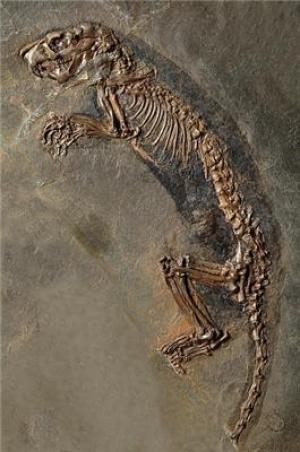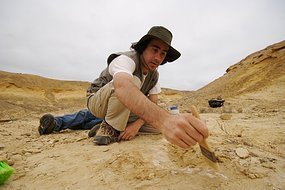Michelle Moran's Blog, page 130
August 27, 2009
Destruction of the Parthian Kuh-e Khajeh is on the Increase

LONDON, (CAIS) -- Despite frequent warnings by the experts, one of the most unique Parthian sites in Iran-proper known as the Kuh-e Khajeh (Parthian Ushida) remains in danger of total destruction, and the cultural authorities have not take any action to ensure its protection.
August 26, 2009
Shackles found in River Thames hold ghoulish tale
Read the rest on Reuters.
Brain changes may have led to Stone Age tools
David Perlman, Chronicle Science Editor
Once upon a time in the long evolution of Homo sapiens, a band of our African ancestors learned to use fire for more than cooking meat, lighting the dark or warding off attacking animals.
Read the rest on the San Francisco Gate Chronicle.August 25, 2009
Archaeologists uncover large Roman statue of Augustus

Archaeologists in have discovered fragments of a 2,000-year-old bronze Roman equestrian statue of Emperor Augustus in a stream near Giessen, the Hessian state science ministry has announced.
Read the rest here.
Gaping Gila Monsters, Buzzing Insects, Clambering Ungulates: New Finds From Germany's Messel Pit

Rodent in a fur coat, Masillamys. (Senckenberg, Frankfurt (Germany)) ScienceDaily— Today, anyone who looks into the Messel Pit, about 20 kilometres southeast of Frankfurt, Germany, will see scattered groups of trees, bushes and grasses. Underlying the vegetation, however, are richly fossiliferous shales.
Read the rest on Science Daily.
First Iranians
The ancient history of Iran, like many other countries, is believed to be based upon the archeological findings and a mixture of documented myths and information recorded by historians or religious entities of the time. Archaeology, which is the study of human cultures through the recovery, documentation and analysis of cultural and environmental data, has been carried out in Iran since quite a long time.
Read the rest here.War's end opens up Angolan 'Jurassic Park'

The country is opening up to fossil hunters who are piecing together the country's Jurassic past (Source: PaleoAngola)
Angola is best known for oil and diamonds, but dinosaur hunters say the country holds a "museum in the ground" of rare fossils waiting to be discovered.
Read the rest here.Ancient skeletons could help solve mystery of rare disease
By Louise Hogan
TWO ancient skeletons with a rare genetic bone disease unearthed from a medieval Irish graveyard may hold key insights for medical experts.
Read the rest here.August 24, 2009
Rare tiles unearthed at palace
Rare Valencian tiles have been uncovered by archaeologists during excavations at the ruins of a Surrey palace, once owned by Henry VIII.
Read the rest on the BBC.Laboratory to Decipher Zapoteca Writing will be Created

The laboratory will warrantee that engraved stones distributed around the archaeological zone undergo detailed study, in an adequate place for their preservation and storage. Photo: Hector Montano/INAH.
MEXICO CITY.- Nearly 300 engraved stones will be studied in the laboratory that will be operating at Monte Alban Archaeological Zone in Oaxaca to advance in Zapoteca writing deciphering.
Read the rest on Art Daily.



